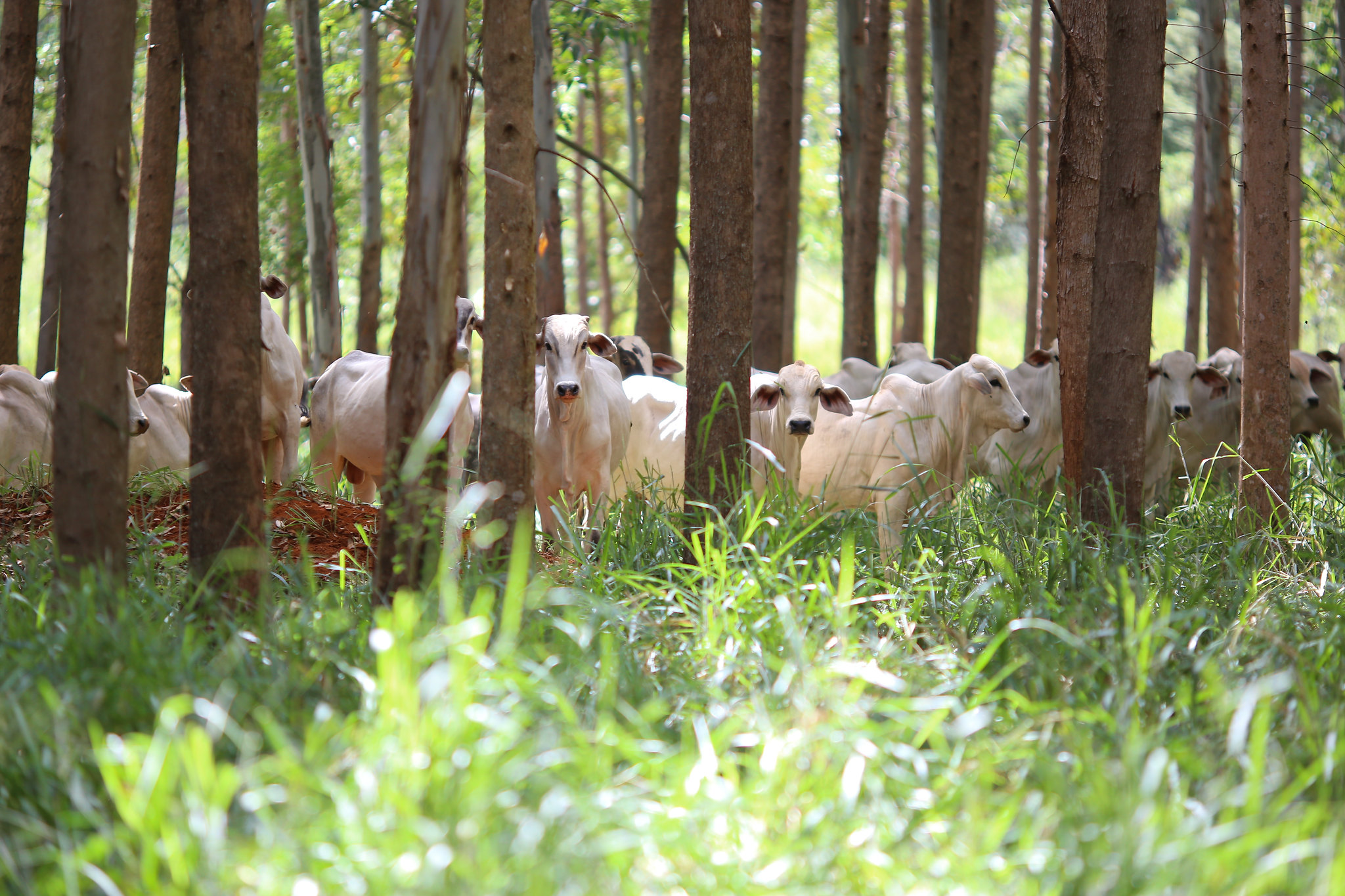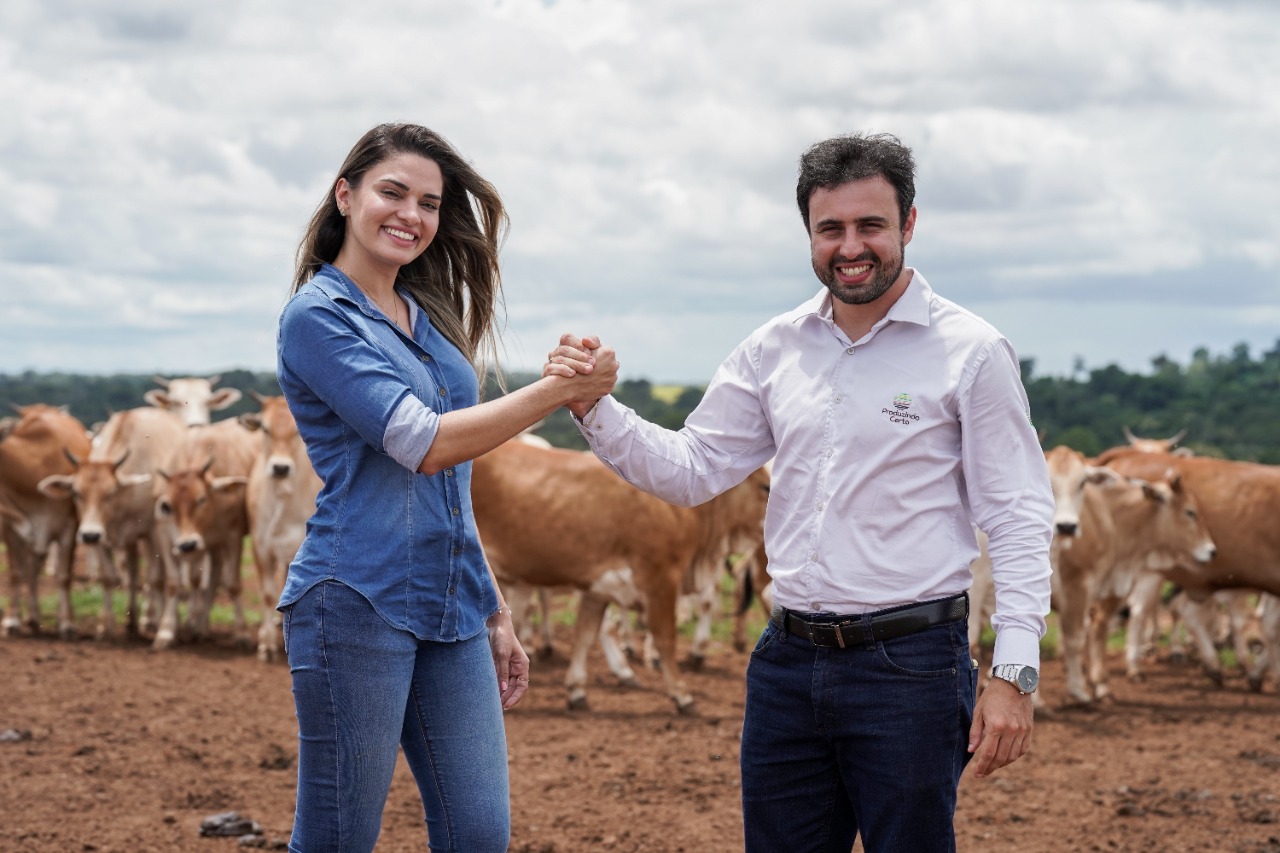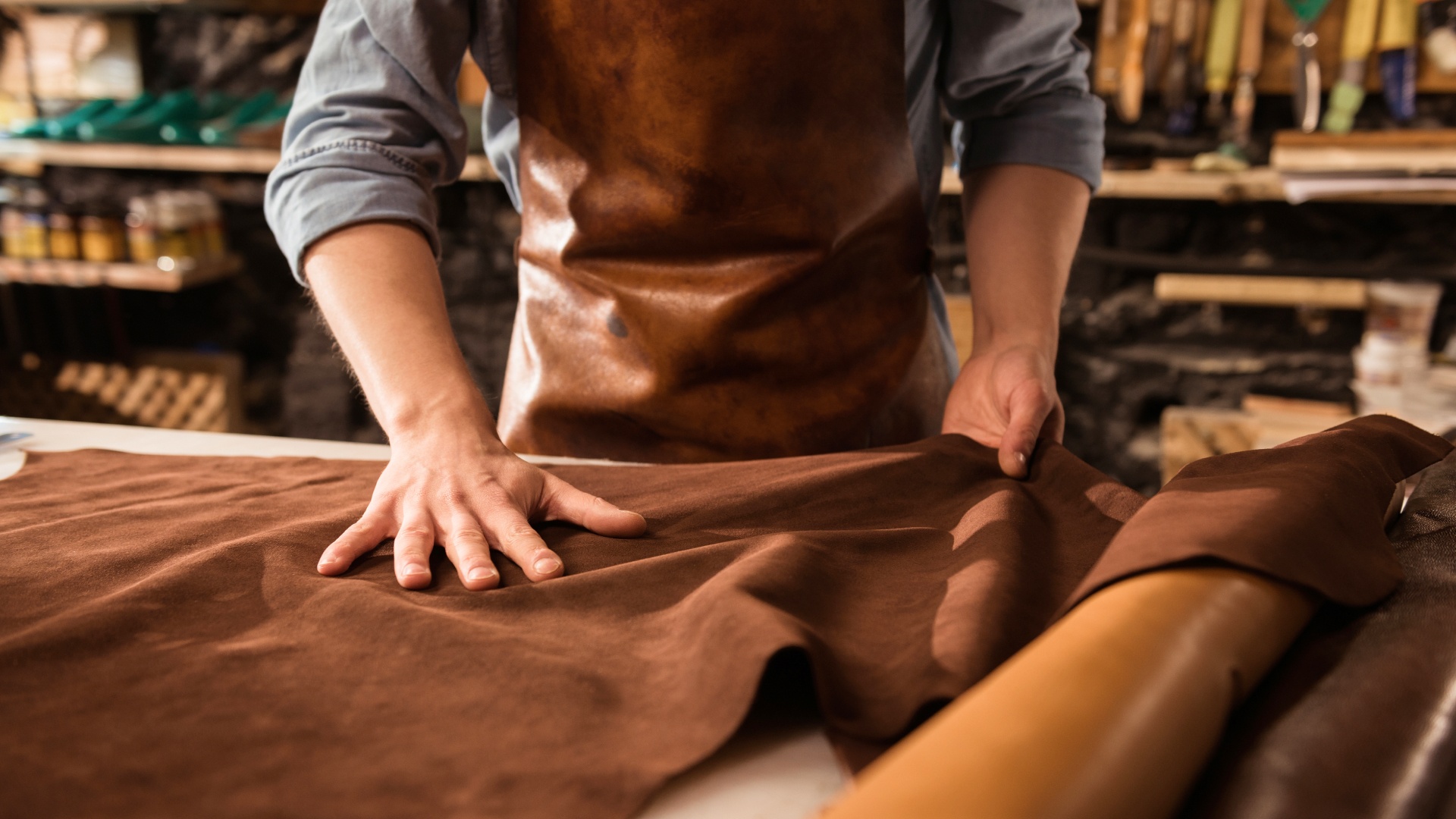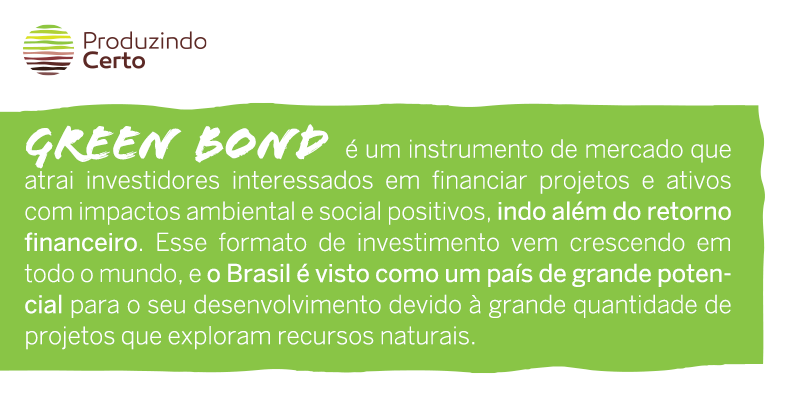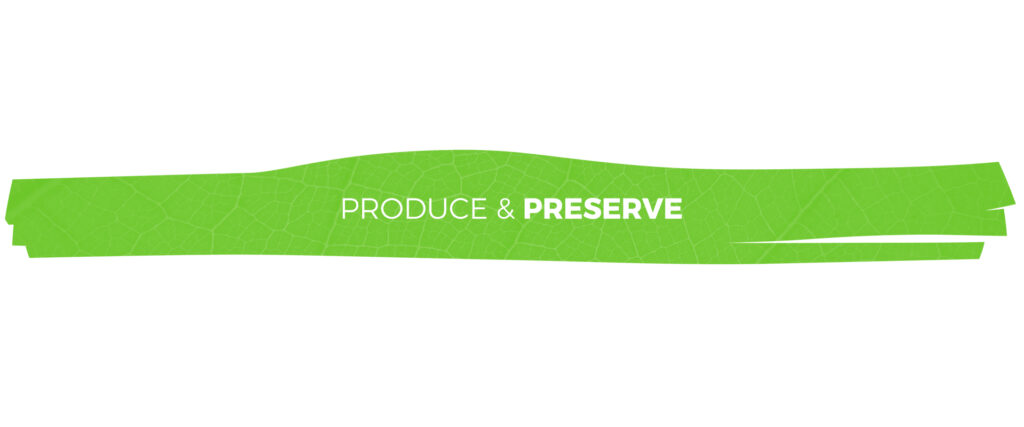
Whether in rotation, consortium, or succession, the ILPF strategy but in the medium and long term, it increases productivity, the income of rural producers, and social and environmental gains.
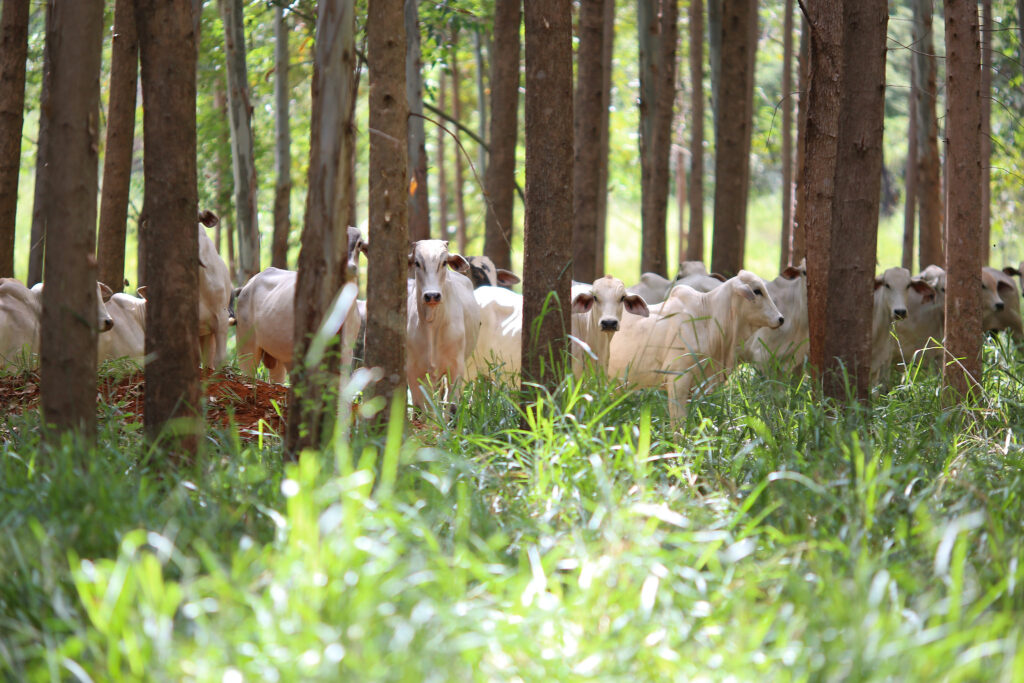
A member of the Produzindo Certo Platform, Schinoca Farm produces grains, plants eucalyptus, and raises beef cattle, like many others in the Jaciara region in Mato Grosso. From October to February, the farm grows soybeans. Starting in March, they plant corn and grass that will serve as pasture for cattle, which enter in July. The result is activity throughout the year, enriched soil, and guaranteed food for livestock. Each year, three crops are harvested there, ensuring greater financial returns for the Schinoca family.
The property practices Crop-Livestock-Forest Integration, a more profitable production strategy for farmers, with direct benefits for the environment and society. The system is based on intensifying land use and increasing production efficiency to encourage social and economic development without compromising environmental resources.
Five years ago, eucalyptus planting became a part of the system. Trees had already been cultivated there but were not integrated with other crops. Today, the eucalyptus forest forms green corridors on the property and provides shade for the cattle. Spaced 33 meters apart, the corridors allow sufficient space for farm machinery to enter.
“It is an awesome project. The cattle don’t even leave the shade of the trees; they are more comfortable. And slaughter occurs earlier: the average is 20 months, but can be as little as 17 months in some cases,” says the owner, Alcindo Jorge Schinoca, age 69. He doesn’t regret the investment and sees the difference not only in the total production of the farm, but also in terms of quality.
“I’m capturing carbon from the atmosphere and injecting it into the soil. And you have soil being covered; it’s not a degraded pasture. The days of cutting down the forest and throwing grass are gone. We’re in the 21st century, and now technology is embedded in everything we do,” explains Jorge Schinoca, who is also proud to produce enough solar energy for the entire farm, including the warehouse, dryer, and feed plant.
Across Brazil, integrated production models are being implemented on 16 million hectares, according to data from Rede ILPF. The goal is to reach 30 million hectares by 2030.
It’s no wonder that the growth of areas cultivated under an ILPF sysytem is one of the drivers behind the voluntary commitment to reduce greenhouse gas (GHG) emissions and deforestation undertaken by the Brazilian government in the Paris Agreement. Technology is also part of the ABC Plan (Agriculture and Low Carbon Emission) of the Ministry of Agriculture, Livestock, and Supply (MAPA).
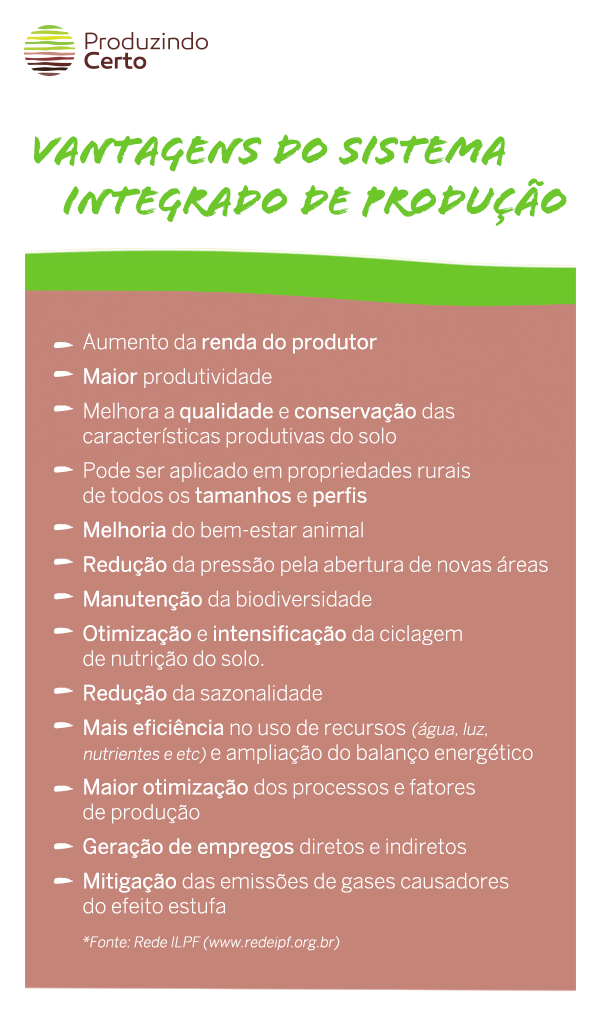
Economic benefits of ILPF
There are several models of ILPF, such as the integration of trees with pastures or crops or the combination of the three components in the same area, as Jorge Schinoca adopted on his farm. As a result, it is possible to increase productivity, diversify production, spread risks, and obtain quality products. The potential to cultivate all year round also creates more jobs in the fields.
In addition to benefits in production and income for those who live in the countryside, integrated practices increase environmental services provided by agribusiness. They help to preserve water resources, fix carbon in the soil, biologically control pests and diseases, and reduce GHG emissions into the atmosphere. Another immediate benefit of this practice is the reduced pressure to clear new greenfield areas for agricultural production.
With all these advantages, the increased use of integrated systems is one of the weapons of agriculture and livestock to foster more prosperous, inclusive, resilient, and deforestation-free economic growth in Brazil. A study coordinated by WRI Brasil and New Climate Economy highlighted the practice as strategic for the so-called green recovery of the economy. According to researchers, more sustainable food production models can generate an additional R$ 19 billion in productivity by 2030, restore 12 million hectares of pastures, reduce the sector’s carbon emissions by 40%, and create more jobs. This performance considers the increased production of grains and beef, recovery of degraded pastures, and reduction in the deforestation rate (click here to read more about this study).
Increasing the transfer of knowledge and technology in the fields, with suitable technical assistance, is one of the challenges for scaling this model. Regional characteristics should also be taken into account when adapting the system, further reinforcing the relevance of specialized technical support.
Embrapa is the main organization for disseminating knowledge about this practice. Together with major players in agribusiness and the financial market, it created the ILPF Network to foster intensification of production through integrated systems.
All this, of course, requires financial investments. It is important to substantially increase credit to scale up techniques, intensify production, and adopt low-carbon technologies. This, however, is also changing quickly.
In addition to the ABC Plan from MAPA, which offers lower-cost financing to farmers interested in adopting sustainable agriculture projects, the number of other instruments is also growing, helping to recognize and value the efforts of those who produce with a view to obtaining social and environmental returns.
This includes attracting international private investments and issuing green bonds based on more efficient performance and less social and environmental impact. In September, the ILPF Network (Rede ILPF) and a group of foreign investors launched SAFF (Sustainable Agriculture Finance Facility), a specific fund for Brazilian farmers who adopt integrated production practices. Through a public-private partnership, this instrument will offer credit with lower interest rates, which will become even more advantageous as producers evolve over time. The fund will hold US$ 68 million in 2021 and is expected to reach up to US$ 1.4 billion in 2026.
Produzindo Certo is also attentive to new opportunities to assist rural producers in obtaining financing and agricultural insurance that recognize and value responsible production.
